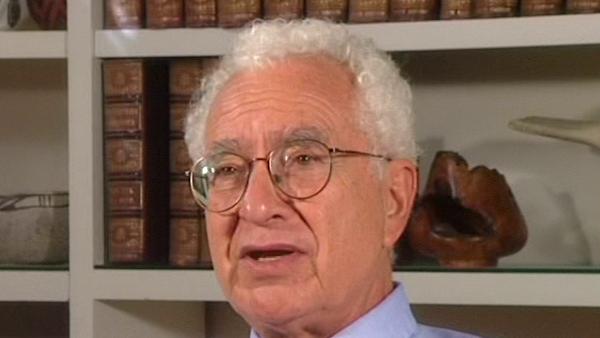NEXT STORY

Pugwash meeting in India
RELATED STORIES

NEXT STORY

Pugwash meeting in India
RELATED STORIES


|
Views | Duration | |
|---|---|---|---|
| 111. Back at Caltech; looking into triplets | 741 | 03:39 | |
| 112. George Zweig | 1482 | 00:50 | |
| 113. Writing up the quarks. Real, mathematical or fictitious particles | 1361 | 03:33 | |
| 114. George Zweig and Leon van Hove | 1223 | 00:53 | |
| 115. Proposing quarks. The Physical Review and Physics Letters | 1104 | 02:34 | |
| 116. Naming quarks | 1016 | 02:19 | |
| 117. A paper on current quarks | 729 | 00:52 | |
| 118. Inspired by a recipe | 626 | 03:20 | |
| 119. Representations | 717 | 02:17 | |
| 120. Pugwash meeting in India | 766 | 02:05 |


I tried to find representations but what I did then was to look at infinitely high momenta for the particles, which is very much like looking at things on the light cone. And I looked for those currents that survived, that didn't go like: one over p sub z, or one over p sub z squared, but things that went like: one, as p sub z went to infinity, the momentum in the z direction. And I looked at the algebra of all those things. So what I got was the set of Fourier components oftime… set of Fourier components of the time components of current densities–so in other words charge densities. And those form of course a… an algebra, and that's still correct, there's nothing wrong with that. I looked for representations of it, but I looked for representations of it without pairs, and those are trivial. Those are just non-interacting, single objects. They have no… we… we showed after a long agonizing search that you don't get anything out of that; you have to put in a certain number of pairs. And it's also useful to look at the longitudinal components. And both of those things were done then subsequently in the work of Bjorken, and Feynman's work which sort of popularize Bjorken's ideas, and so on. Now we could have used the transverse Fourier components of the time components of the currents and found representations that were non-trivial by allowing higher values of the quantum numbers. What I did was to restrict the quantum… the total quantum numbers to the ones for the… for the particle itself. In that case we might have gotten some very interesting stuff but we… but we didn't do that.
New York-born physicist Murray Gell-Mann (1929-2019) was known for his creation of the eightfold way, an ordering system for subatomic particles, comparable to the periodic table. His discovery of the omega-minus particle filled a gap in the system, brought the theory wide acceptance and led to Gell-Mann's winning the Nobel Prize in Physics in 1969.
Title: Representations
Listeners: Geoffrey West
Geoffrey West is a Staff Member, Fellow, and Program Manager for High Energy Physics at Los Alamos National Laboratory. He is also a member of The Santa Fe Institute. He is a native of England and was educated at Cambridge University (B.A. 1961). He received his Ph.D. from Stanford University in 1966 followed by post-doctoral appointments at Cornell and Harvard Universities. He returned to Stanford as a faculty member in 1970. He left to build and lead the Theoretical High Energy Physics Group at Los Alamos. He has numerous scientific publications including the editing of three books. His primary interest has been in fundamental questions in Physics, especially those concerning the elementary particles and their interactions. His long-term fascination in general scaling phenomena grew out of his work on scaling in quantum chromodynamics and the unification of all forces of nature. In 1996 this evolved into the highly productive collaboration with James Brown and Brian Enquist on the origin of allometric scaling laws in biology and the development of realistic quantitative models that analyse the influence of size on the structural and functional design of organisms.
Tags: James Bjorken, Richard Feynman
Duration: 2 minutes, 18 seconds
Date story recorded: October 1997
Date story went live: 24 January 2008